Are you planning a trip to Puerto Rico for this winter? Have you seen all the ads, checked out all the tourist sites, blogs and YouTube videos and still feel lost? Do you feel like you’re being sold to? Well, guess what? You are!
Unlike the United States and Europe, Puerto Rico’s peak tourism season is in winter, not summer. That’s because most continentals have plenty of entertainment options during the summer months. They don’t have a compelling reason to look beyond their borders.
In the winter it’s a different story. Unless you’re into winter sports, the white stuff is mostly a nuisance for you. It’s hard to drive in, many places close and conditions can be downright dangerous. Besides, let’s face it. Feeling wet, cold and miserable isn’t fun at all.
You’ve heard stories about Puerto Rico. Some of them were good and others not so much. What you’d like is for someone to tell you the facts, without the marketing hype or the frosting (pardon the pun).
That’s what this post will be all about. I’ll answer your most pressing questions about Puerto Rico. I’ll do it honestly, in some cases bluntly and before you spend a single dime. Why? Because, as a fellow traveller, I’ve had my share of disappointments. So let’s just say that I’m paying it forward.
SO WHO AM I ANYWAY?
My name is Orlando Mergal, but you can call me Orlando. I was born in New York City. My parents moved back to the Island when I was nine. That was back in 1963, so you do the math.
Back in 2013 I started this blog. Before that I served the Island’s pharmaceutical sector for 25 years. My services included writing, translations, photography, videography and all around corporate communications. My formal training was in science and business communications.
So what makes me an expert on travel? Well, I’m not. I’d rather call myself a lifelong student. But, in the case of Puerto Rico, the Island is my home. And believe me, I’ve explored it inside out for over 50 years. But that explains only the “what”, not the “how”.
My love for landscape photography has taken my wife and I to every corner of Puerto Rico.
We’ve also visited over 20 U.S. National Parks, 50+ state parks and some parts of Europe. We travel without a schedule or predetermined route. Hence, we’ve seen places that most tourists will never see.
My sister site Puerto Rico Photography is where I sell my images. Here I tell you about my adventures through writing, photos and video. Oh, and I include the GPS coordinates for every location so you can go there too.
SO WHAT’S THIS POST GOING TO BE ABOUT?
In the beginning I mentioned the ads. Those “magical” pieces of audiovisual wizardry that got you to call your travel agent. Oh wait. Those are almost extinct (the agents, that is). So I guess you booked online. Right? Well, be that as it may, you got wrapped in a marketing spell.
Wouldn’t you like to know the truth about Puerto Rico? After all, pretty soon you’ll be here. It’s a little over 1,000 miles southeast of Miami. Yet, in many aspects it’s like a whole ‘nother world. Don’t you think you should be “in the know before yo go”?.
Let me tell you what we’ll cover:
- Currency
- Nationality
- Language
- Cost of Living
- Food
- Getting around
- Driving and traffic
- Road Conditions
- Safety
You’ll notice that I didn’t mention attractions. Those are covered throughout the rest of this blog. There are hundreds of posts and pages about every corner of Puerto Rico under the “San Juan Metro” and “La Isla” menus. You’ll also find dozens of videos under the “Blog” and “Videos” menus. In every case I include GPS coordinates for every attraction. That’s why we call the site Puerto Rico By GPS.
So let’s get to it, because we have a lot to cover.
Currency
Puerto Rico’s economy is based on the U.S. dollar. That means that there is no currency exchange, unless you’re coming from outside the United States.
Unlike other jurisdictions, like Europe and Canada, not all banks on the Island offer currency exchange. That’s because most tourists on the Island come from the mainland. Banco Popular (the largest bank on the Island) does offer currency exchange. They also have over 130 branches peppered throughout the Island.

Puerto Rico also has a robust network of ATMs. These include terminals from Banco Popular, other banking institutions and credit unions. That means that most credit and debit cards are also honored.
Regular banking hours are from 8:00am to 4:00pm, Monday thru Friday. Some banks go as late as 5:00pm. Most banks close on Saturdays and all close on Sundays.
Many banks have recently been restricting the use of cards issued on the Island when traveling abroad. In order for these cards to work you have to call your bank ahead of time and inform them where you’re planning to be. This is “supposedly” a security measure. Whether we like it or not, that’s the way the game is played.
So my suggestion is that you verify if that’s the case with your bank as well. Otherwise, you could find yourself on the Island with cards that won’t work.
Finally, I always carry some old fashioned cash in my pocket. Those “analog greenbacks” work every time.
Nationality
Puerto Ricans are U.S. citizens and Puerto Rico is U.S. soil. We became a U.S. Territory in 1898, following the Spanish-American War. In 1917 President Woodrow Wilson signed the Jones-Shafroth Act. This granted Puerto Ricans U.S. Statutory Citizenship.
What does that mean? The U.S. Constitution doesn’t cover citizens born in the U.S. territory of Puerto Rico. That’s why in 1917 the U.S. Congress passed a law granting U.S. Citizenship to people born on the Island. Shortly after 20,000 Puerto Ricans were drafted to serve during World War 1. Coincidence? What do you think?.
Later on the United States Supreme Court ruled that Puerto Ricans born after January 13, 1941 were U.S. citizens at birth.
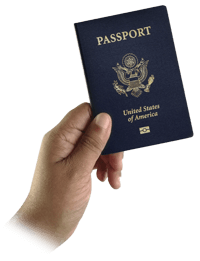 U.S. citizens born in any of the 50 states enjoy the same rights and privileges in Puerto Rico as in any U.S. state. However, if they were to move to Puerto Rico they would lose the right to vote in U.S. elections.
U.S. citizens born in any of the 50 states enjoy the same rights and privileges in Puerto Rico as in any U.S. state. However, if they were to move to Puerto Rico they would lose the right to vote in U.S. elections.
That means that your U.S. driver’s license is valid in Puerto Rico. For how long exactly? That’s a question that you will need to ask at the Island’s Department of Transportation or at your car rental company. I think it’s close to a year, but I’m not sure.
As for I.D., U.S. citizens are not required to carry a National Identity Card. Usually, your drivers permit or license will do the trick. However, I have learned through the school of hard knocks that a passport is always better. Like a friend of mine likes to say: “with my passport in hand I am me regardless of where I am”. I never leave home without it.
Language
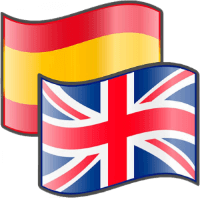 Puerto Ricans speak Spanish. There are no two ways about it. However, that doesn’t mean that they don’t speak English as well. Many of them, like my children and I, can’t be told apart from regular Americans. My wife, on the other hand, has a heavy Latino accent.
Puerto Ricans speak Spanish. There are no two ways about it. However, that doesn’t mean that they don’t speak English as well. Many of them, like my children and I, can’t be told apart from regular Americans. My wife, on the other hand, has a heavy Latino accent.
The fact is that most Puerto Ricans speak and understand English. Albeit, at different degrees.
Traffic signs on the Island are either of the international variety or in Spanish. Even stop signs say “Pare” instead of “Stop”. This is something that I always found funny in Spain. Over there all the signs are in Spanish —of course— but stop signs say “Stop”. Go figure.
Most signage is in Spanish. Businesses, on the other hand, are named in English. I guess it makes the owners feel more “distinguished”. You’ll never find a place called “Licorería Pepe”, but you might find “Pepe’s Liquor Store”. Somehow Puerto Ricans got it in their heads that if they named their businesses in English it would make them sound more “important”. Hmmm..
Most business transactions are done in English. However, government transactions are done in Spanish. School takes place in Spanish, except for English class, of course.
Tourist attractions are mostly bilingual. However, most operators speak native Spanish and transactional English.
In the end, Puerto Rico is a Latin American culture shrouded in American influence. Those of us that live on the Island hardly notice it, but just ask a real “latinoamericano” and they’ll tell you how “americanized” the Island really is.
Driving is specially interesting. Don’t miss our video “Driving In Puerto Rico” before renting a car on the Island. You’ll have a few laughs.
Cost Of Living
Puerto Rico used to be economical, but not anymore. The fact that it’s an Island, and that everything needs to be shipped or flown in, doesn’t help either.
You can call Puerto Rico whatever you want: a territory, a possession… it doesn’t matter. In the end it’s a colony of the United States. Why? Because the name doesn’t alter the essence.
 Every aspect of life on the Island is controlled by outside forces. Most large U.S. retailers have a presence on the Island. This makes life for small businesses almost impossible. Let alone the “dumping” factor that cripples small operations and passes down recycling and disposal costs.
Every aspect of life on the Island is controlled by outside forces. Most large U.S. retailers have a presence on the Island. This makes life for small businesses almost impossible. Let alone the “dumping” factor that cripples small operations and passes down recycling and disposal costs.
Recent laws, designed to attract capital from the states, have effected the real estate market. This has led to massive speculation, gentrification and a short term rental explosion. Everything is more expensive than it was 10 years ago. This includes food, gas, entertainment, accommodations and car rentals.
In fact, many major cities on the mainland are more economical than San Juan. And please notice that I did say “San Juan”. As you move away from the San Juan Metroplex prices tend to go down significantly.
Food
I produced a video some time ago titled “Is Puerto Rican Food Any Good?” which I invite you to watch. Believe me, you’ll learn a lot in a little over 3 minutes.
Some Puerto Ricans will tell you that Puerto Rico is a blend of three cultures: Spanish, African and Taíno. But that’s severely shortsighted. When the Spaniards got here in 1493 they brought with them 8 centuries of moorish influence. They also brought shiploads of jews fleeing from the inquisition.
Later on Africans were introduced as slaves, Corsicans arrived on the south coast and even Chinese that helped build the Island’s roads.
All this without mentioning the 125+ years of United States influence.
This blend has created a unique cuisine that rivals that of the major capitals of the world.
And you don’t need to go too far. All you have to do is walk the streets of Old San Juan and you’ll find everything from Cuban to Turkish to Spanish to Chinese to Italian. Let alone every imaginable fast food joint from the United States.
And, as you leave San Juan, and venture to the smaller towns of “la Isla”, that’s when the real fun begins. You’ll find all sorts of Puerto Rican delicacies, beverages and deserts. Plus the people are nicer. Maybe because they’re exposed to less stress? I don’t know.
Getting Around
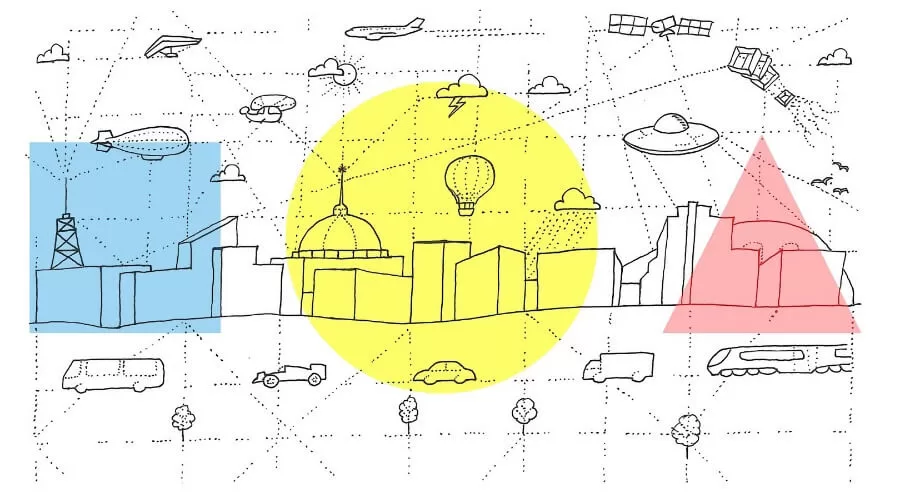
If there’s one thing Puerto Ricans can’t brag about it’s the Island’s transportation systems. All of them could be better. That’s not to say that any one of them in particular is disgraceful but when you compare them with other cities the difference is abismal in some cases.
Buses
If you want to go anywhere beyond the San Juan Metroplex forget about public buses. There aren’t any. That said, the San Juan Metroplex is served by AMA “Autoridad Metropolitana de Autobuses” (Metropolitan Bus Authority), a government-run agency that has never risen above mediocre.
To be fair, the buses are relatively clean and seem to be well kept. But waiting for one takes patience. Especially at night and on weekends. Plus they are highly unpredictable. If you need to be at a certain place at a certain hour the bus should not be your choice.
Trains
There is only one train in Puerto Rico. It’s called “El Tren Urbano” (the urban train) and it goes between the Hato Rey Commercial District and Bayamón. Some people call it the “train to nowhere” because it serves no real purpose other than connecting the Island’s two largest judicial centers.
Just so you know, it doesn’t go by any of the tourist areas, the major entertainment centers (with the exception of the José Miguel Agrelot Coliseum) or the major shopping centers. Oh, and did I mention that it cost 2.5 billion dollars for 10 milles of track?
In the beginning it used to have 4 or 5 cars. Lately I’ve seen it with as little as two. In all cases mostly empty.
The sad part is that it works well, follows a schedule and is mostly clean. But, since it doesn’t go anywhere useful, people hardly use it.
Ferries
There are two main ferries in Puerto Rico. The rest are secondary operations that are not worth mentioning.
The oldest and best known ferry on the Island is “La Lancha de Cataño” (the Cataño Ferry). It’s literally a one-boat-operation that goes between Old San Juan and the town of Cataño across San Juan Bay.
I produced a video about Cataño earlier this year in which I covered this ferry. As I recall, it worked well, was kept clean, stuck to a schedule and arrived on time. However, it had one glaring problem. The company that holds the government contract only has one boat.
Now what could go wrong there?
The same company has the contract for the Vieques and Culebra ferry. Vieques and Culebra are two island municipalities off the east coast of the larger island. For decades the complaints have been the same: boats that break down, don’t arrive or arrive late.
And, of course, when you live on an Island where you depend on the ferry —to go to your doctor’s appointment or to attend any other critical matter— these deficiencies become really critical really quick.
Not a year goes by without hearing complaints by the people of Vieques and Culebra.
This also affects tourism. Many people that come to Puerto Rico ask about Flamenco Beach on the north side of Culebra. After all, it frequently ranks as the number one beach in the world! But, when they learn that a 20-minute round trip plane ticket averages $240 per person their interest dwindles.
Air Travel
Puerto Rico is a small island. It only has a land area of 3,435 square miles. And yet it has 8 airports. There was a time when you could catch a flight to almost anywhere in the world. Even the Concord used to fly to Puerto Rico. But things have changed.
Economic realities have forced airlines to reduce the number of destinations as well as the number of flights. Terrorism has also forced changes like stricter FAA and TSA rules, as well as uncomfortable screening proceses. But that’s the world that we live in and things aren’t much different at any other airport on the mainland.
All in all, Puerto Rico’s airports work well. Albeit they could improve in the way of moving vehicular traffic and people. Ironically, every time I arrive on the Island there’s the same mess of people picking up passengers. Then, as you leave the airport, you can see the line of cars parked on the shoulder of the road waiting for their loved ones to land.
There has to be a better way!
As for the mechanics of catching a flight, registering your luggage, going through the Department of Agriculture screening, the TSA and boarding its all the same as at any other airport. Here’s a list of Puerto Ricos most important airports:
- Luis Muñoz Marín International Airport – IATA Code – SJU
- Rafael Hernández International Airport – IATA Code – BQN
- Mercedita International Airport – IATA Code – AIM
- Antonio Rivera Rodríguez Airport – IATA Code – VQS
- José Aponte de la Torre Airport – IATA Code – NRR
- Benjamín Rivera Noriega Airport – IATA Code – CPX
- Fernando Luis Ribas Dominicci Airport – IATA Code – SIG
- Eugenio María de Hostos Airport – IATA Code – MAZ
Taxies
Maybe I shouldn’t say this, because you’ll guess my age, but when I started driving back in the early seventies a gallon of gasoline used to cost 25¢. That’s a gallon, not a liter. Nowadays it’s close to a dollar a liter.
Puerto Rico uses the imperial system. That’s feet, pounds and gallons. But, when it comes to gasoline, we measure it in liters. Why do you think that is?
It’s not because it more convenient, because that’s a matter of opinion. Neither is it easier to understand. In fact it’s harder, because Puerto Ricans (like Americans) think in gallons. Then why do you think it is?
It’s a marketing ploy. Back during the 70’s, when oil prices went through the roof, local gasoline vendors devised a way to make steeper prices a little more palatable for Puerto Ricans. Being that they couldn’t control the price, they changed the measuring unit. Instead of selling gas by the gallon they started selling it by the liter.
At first people resented it, because a gallon of gas equals 3.8 liters. But after a while they forgot the actual scheme and the only thing that stuck in their heads were the cheaper prices. After all a 26¢ liter of gas sounded a lot better than a $1 gallon.
To this day gasoline is till sold by the liter on the Island.
Well, taxies are the same concept. As they started getting more and more expensive the rates changed from miles to kilometers. Why? Because there are 1.6 kilometers in a mile. Hence, a smaller unit resulted in a lower price. But, as in the case of gas, it was a mirage because $2 per kilometer were actually $3.20 per mile.
I have to admit that I never ride taxis. First, because I live on the Island and I own a car. And second, because I’d rather rent a car than ride a taxi. But each person is different and we all have our own preferences.
Finally, I find the entire exercise confusing. There are surcharges per piece of luggage, per passenger, per area… in the end you end up closing your eyes, hoping for the best and paying whatever you’re charged. Taxis regulated by Puerto Rico Tourism Company have some fixed prices for the San Juan Metropolitan Area.
That said, Taxis on the Island have to meet strict regulations of quality, cleanliness, courtesy and safety. So, all in all, they are one more alternative for a certain sector.
Rideshare
Ridesharing services are widely available throughout Puerto Rico. Especially in larger cities like San Juan, Ponce and Mayagüez. At the moment only Uber is available.
Like taxis, rideshare can become real expensive real fast, especially if you go outside city limits. Your best option, once again, is to rent a car.
In the past rideshare services have gotten a bad rap because of security concerns. As in any tourist destination it is advisable to take certain precautions.
- Wait inside until your ride arrives.
- Make sure you’re getting in the right car, with the right driver.
- Match the license plate, car make and model and driver photo with what appears on your app.
- Ask the driver to confirm your name as it appears on his app.
- Sit in the back and make sure that the door opens from the inside.
- Wear your seatbelt.
- Share your trip details with loved ones.
- Don’t volunteer information.
- Be respectful.
- Give feedback about your experience.
As in the case of taxis, I’ve only used rideshare services several times in my life. Quite frankly, I’m a rental car kind of guy. But I must admit that the few that I have taken have been positive experiences.
Car Rentals
Most of the national car rental companies are available in Puerto Rico. Most of them are located either next to the airport entrance or on a service road next to the southern runway. Most of them also have shuttle service to get you from and to the airport.
There are also smaller local operators that offer competitive pricing. You can find those in the Isla Verde area and on Baldorioty Avenue. That’s road 26 that goes by the airport.
Although I have a private vehicle, there have been times when it has made better sense to renta a car than to use my own. I’ve also rented small trucks for commercial purposes. And to be honest I can’t recall a single instance when I had a bad experience.
They all offer pretty much the same makes and models, the same rates and the same ammenities. It’s really a matter of price and convenience. So your best bet is to shop around.
Driving and Traffic
Driving in Puerto Rico can be quite an experience, especially if you come from a smaller, laid back state where people actually obey traffic laws. On the other hand, if you come from a major metropolis like New York, Orlando or Dallas you might feel right at home.
Rush hours can be crazy, especially in the San Juan Metroplex. Traffic jams can extend for miles without and major cause or accident. People will drive on the shoulder, change lanes without a turn signal and barge in at the last minute. They’ll also honk their horn the minute the light turns green.
In fact, the Royal Time Museum in Greenwich defines a second as the time it takes a Puerto Rican to honk his horn after a traffic light turns green. Just kidding.
Then there’s road rage. Like in many other places around the world, road rage has become a real thing in Puerto Rico. Regardless of the circumstances, never ever give anyone “the finger”. It can cost you your life. Seriously.
Then there’s the signage. Several years ago I produced a video titled “Driving in Puerto Rico” that describes how confusing it can be to drive on the Island. I invite you to watch it. It’s a lot of fun.
Road Conditions
 Driving on the Island can be especially challenging, particularly under rainy conditions. Many roads have potholes the width of a bathtub that can mess up your car when filled with water.
Driving on the Island can be especially challenging, particularly under rainy conditions. Many roads have potholes the width of a bathtub that can mess up your car when filled with water.
Of course, your rental car should carry insurance that will take care of the financial aspects of the repair, but the fact of the matter is that a large pothole can also lead to accidents and injuries.
Puerto Rico’s rainy season is usually from April to November, with August being the wettest month. Then again, Puerto Rico is a tropical island so rain can come at any time.
Flooding is also a common occurrence on the Island. When combined with potholes, missing drain covers and road debris it can lead to accidents and even death.
Safety
 I would love to tell you that Puerto Rico is a quaint and peaceful place where you’ll be safe at all times. But it’s not. The Island does have its share of crime, mainly related to the drug trade.
I would love to tell you that Puerto Rico is a quaint and peaceful place where you’ll be safe at all times. But it’s not. The Island does have its share of crime, mainly related to the drug trade.
Criminals also know that you’ll be in town for a short time and that you’ll sooner pass on a legal matter than pursue it in court.
That said, there are measures you can take to be as safe as possible.
- Safety in numbers – Vandals are more prone to prey on lone individuals than on larger groups. So try to stick to a group, be it fellow travellers or friends.
- Larger venues – Larger venues are generally safer. After all, there’s a reason why they’re larger. They have better illumination, safer facilities, security personnel, cameras and safety measures in place. Leave the small obscure places for the locals who know their way around better.
- The front desk clerk is your friend – Everywhere I go the first person that I try to befriend is the front desk clerk. He/she is generally a local who can tell you where to go and which places to avoid. They generally know all the cool places to eat, the events taking place and the last minute deals.
- Check the weather — This should be obvious but you’d be surprised of how many people actually drown in the Puerto Rico every year. After all, it’s an island. So it’s surrounded by water. But all that water can also bring problems.
There’s an app on the right hand column of the Puerto Rico By GPS website that gives you all the latest weather information. Right below it there’s a banner that reads: “Don’t Drown”. Click on it and you’ll end up at the National Weather Site for Puerto Rico, where you’ll find the latest information and weather advisories.
Pay particular attention to the hazardous weather and rip current advisories. They can save your life! If they say to stay out of the water, stay out please! At least you’ll get to go home and tell your friends and family about the monstrous waves.
Puerto Rico is a beautiful place where you can have the time of your life and return safely. But it’s not perfect. Like any other place it has its positives and its negatives. It can be paradise or it can be hell.
Pay attention to posts like this one. There’s a reason why I took the time to write this 4,000+ word article just for you. I want you to keep your eyes wide open. I want you to enjoy. I want you to be safe and –above all– I want you to return again and again.
All the best from sunny Puerto Rico,
©2023,Orlando Mergal, MA
____________________
Bilingual Content Creator, Blogger, Podcaster,
Author, Photographer and New Media Expert
Tel. 787–750-0000, Mobile 787–306-1590
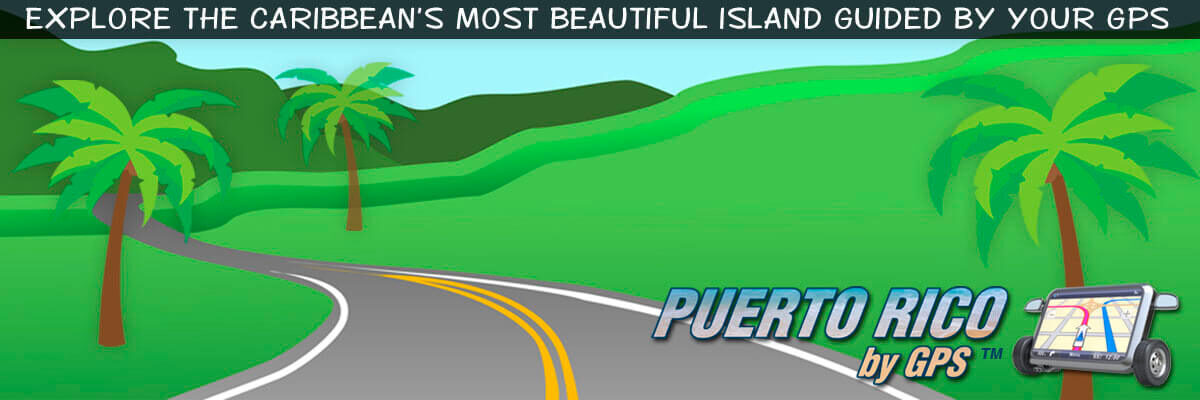


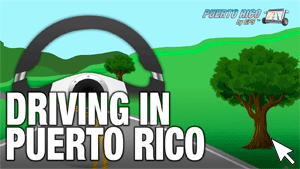

Hi, I can’t download the 8 places to visit in Puerto Rico with gps points. And how I can get your gps book having gps attraction waupoints? Thank You
To download the booklet just go to https://www.puertoricobygps.com. Once you’re there move your cursor to tthe top edge of your screen. The banner will appear. Fill out the requested information, click on the “Yes, Send Me My Booklet” button and the server will send you an email with a link to download the booklet. If you don’t receive it after a while, check your spam folder. As for “The Old San Juan Walking Tour” book, go here to purchase it on Amazon: http://www.theoldsanjuanwalkingtour.com/ . Merry Christmas!!!